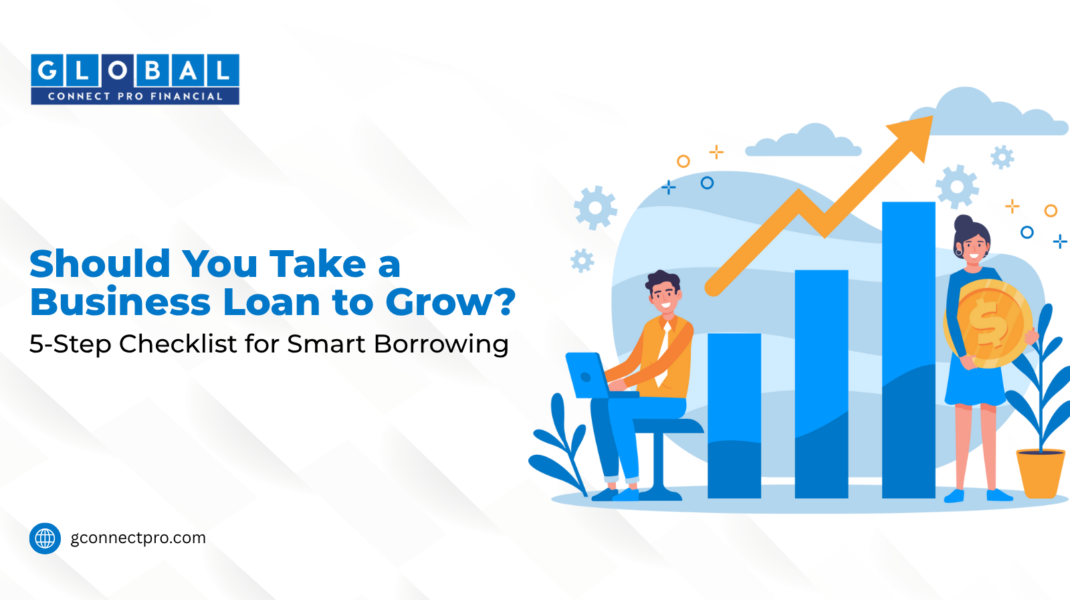Should You Take a Business Loan to Grow? 5-Step Checklist for Smart Borrowing

Business growth is exciting—but it often comes with a price tag. Whether you’re planning to hire a team, expand your operations, or invest in marketing, a business loan can provide the extra capital needed to bring that vision to life.
A business loan can offer the funding you need, but taking on debt isn’t a decision to make lightly. Before you apply, it’s important to evaluate whether borrowing aligns with your goals and financial stability.
This 5-step checklist will help you make a clear-headed, strategic decision about whether a business loan is the right step for your growth journey.
1. Define the Purpose of the Business Loan
The first and most important question is: Why do you need this loan?
Successful borrowing starts with a specific, growth-driven objective. General intentions like “business expansion” are too vague. Instead, focus on goals such as:
- Launching a new product or service
- Hiring skilled staff to improve output
- Purchasing equipment to increase efficiency
- Boosting marketing to reach a wider audience
A well-defined purpose helps you determine whether the loan is truly necessary—and whether the outcome justifies the cost.
2. Forecast the Return on Investment (ROI)
Once your purpose is clear, the next step is to evaluate the potential return. In other words, will the use of funds generate more revenue or value than the cost of borrowing?
This requires a bit of forecasting:
- Will new hires or equipment improve productivity?
- Will increased inventory meet rising customer demand?
- Will your marketing plan convert into higher sales?
The goal is to borrow with the confidence that the loan will contribute directly to sustainable growth. If the return feels uncertain or delayed, it may be worth rethinking or scaling the loan request.
3. Review Your Current Financial Health
Even if the loan will likely benefit the business long-term, you must assess your current financial position to ensure you can handle the short-term repayment obligations.
Ask yourself:
- Are you consistently generating positive cash flow?
- Do you have existing loans or financial obligations?
- Can your business absorb repayment without affecting operations?
If you’re unsure, consult your financial statements and review your income and expense trends over the last few months. A healthy cash flow is key to making borrowing a smart—not stressful—move.
4. Research Your Business Loan Options
Not all loans are created equal. There are different types of business financing available, and the best one depends on your unique needs and repayment capacity.
Common options include:
- Term loans for planned, long-term investments
- Lines of credit for flexible, ongoing expenses
- SBA or government-backed loans with favorable terms for small businesses
- Equipment financing if your goal is to acquire tools or machinery
Compare interest rates, repayment periods, funding speed, and lender credibility. Also, check for hidden fees or early repayment penalties.
Taking time to explore options can help you avoid expensive or mismatched loan products.
5. Plan Your Repayment Strategy Before You Borrow
A loan should never be taken without a clear repayment plan in place. Ask yourself:
- How will the loan be repaid—through new sales, improved efficiency, or cost savings?
- Is there a buffer in case revenue projections fall short?
- Have you accounted for both the principal and interest in your budget?
A good repayment plan protects your business from cash flow strain and preserves your creditworthiness for future financing needs.
Remember, the true cost of a loan isn’t just interest—it’s also the pressure it adds to your monthly financial rhythm. Being proactive can prevent borrowing from turning into a burden.
Final Thoughts: Borrowing Should Be Strategic, Not Reactive
There’s no doubt that funding can accelerate business growth. But before you reach for a loan, pause and evaluate whether you’re borrowing from a place of strategy—or urgency.
This 5-step checklist is designed to help you borrow with confidence. When you’re clear on your purpose, realistic about your returns, financially prepared, informed about your options, and committed to a repayment plan, a business loan becomes more than debt—it becomes a stepping stone to your next stage of growth.
So ask yourself: Are you ready to grow wisely?

